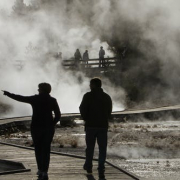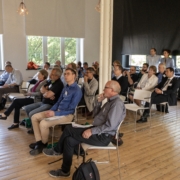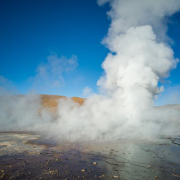LPRC joins the Baseload Capital Online Seminar #3: Geothermal and Risks (part 1)
On the 3rd June 2021, Baseload Capital (Swedish investment bank specialised in sustainable energy) hosted its 3rd online seminar session of the year, this time on risks within the geothermal industry. Specifically, the day’s session tackled risks across various inter-linked topics: environmental risks, drilling and social acceptance.
Environmental risks
Environmental risks although real can be either overrated or underrated based on preconceptions or past assessment which do not hold in the current state-of-the art. The first environmental risk assessed was the one linked to CO2 in geothermal: whilst green and sustainable, geothermal power plants may emit CO2. The reason for the leakage of these quantities of gases emitted from geothermal power plants aren’t due to power production because there’s no combustion. These gases are naturally present in the rock basement, minor constituents of most geothermal reservoirs. The importance of this risk varies greatly from one region of the globe to the other as well as the technology involved. Furthermore, naturally emitted CO2 is poorly regulated worldwide despite available CO2 leakage solutions exist such as binary plants (see figure below). The trend in the industry is to reach carbon neutrality thanks to binary geothermal power plants that have basically zero CO2 emissions during the production process. On a positive note, the average non-binary geothermal power plant releases between 100 and 120 grams of CO2/KWh whereas fossil fuel plants release between 1000 and 1500 grams of CO2/KWh.
The second type of environmental risk boils down to thermal well stimulation and induced seismicity. The scientific consensus around thermal well stimulation is that this is nowadays an overrated risk. It is a quick and effective way of injecting cold water into a hot geothermal well which leads to contraction of fractures and allows the permeability to be recognised. Most deep geothermal wells make use of that methods to great effect with minimal risk. Other well stimulation methods involve acid stimulation (either hydrofluoric or hydrochloric acid) of a reservoir and have to be handle with great care. Although suffering from a bad reputation, this acid gets neutralised in the basic environment of the reservoir (calcite veins and fractures) rendering it harmless whilst improving the productivity of the well. The other more dangerous aspect of situation is induced seismicity or fracking. This risk has to be taken with the most care and has the snowball effect of introducing fear in population leading to less geothermal project, thus less green development.

Figure: Geothermal plant scheme

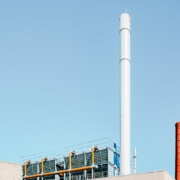
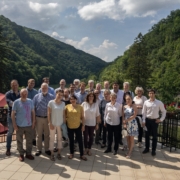 Tamas Miklovicz
Tamas Miklovicz